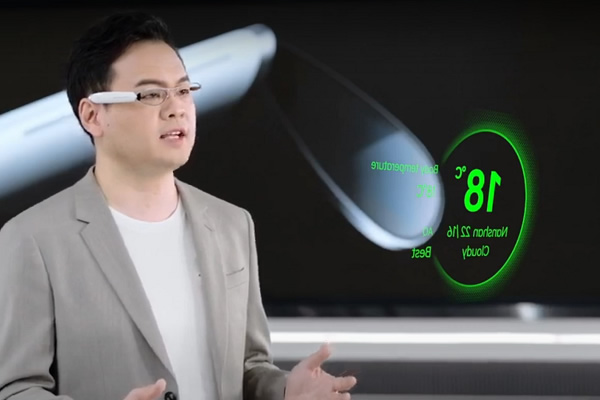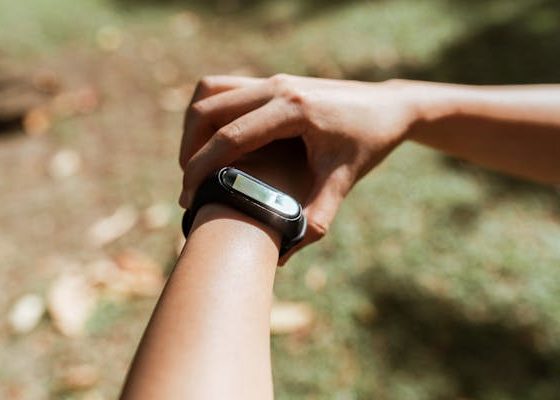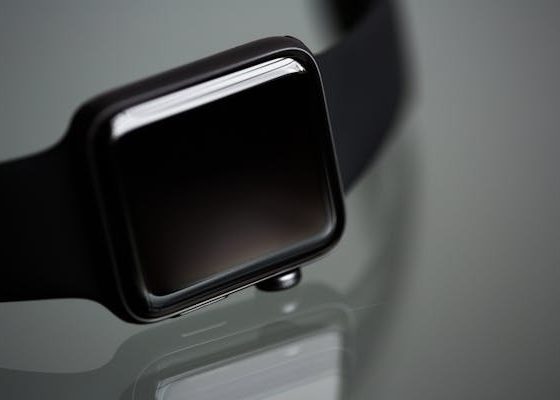
The contemporary workforce is undergoing a transformative evolution, powered by an array of advanced wearables for work. These ingenious devices, once relegated to the realm of fitness tracking and novelty gadgets, have become invaluable tools for enhancing productivity in the office and beyond. In this article, we embark on an expedition to explore the multifaceted world of wearables and their profound impact on the modern workplace.
Introduction
Wearables for work are revolutionizing how we interact with technology in professional environments. These innovative devices seamlessly integrate into our daily routines, providing convenience, efficiency, and enhanced productivity. From smartwatches that keep us connected and organized to augmented reality glasses that offer hands-free assistance, wearables are reshaping industries ranging from healthcare to manufacturing. By leveraging sensor technology, data analytics, and connectivity, these devices empower employees to perform tasks more effectively, streamline processes, and improve safety standards. As the wearable market continues to evolve, businesses are embracing these tools to stay ahead in an increasingly digital world.
What Are Wearables for Work?
Wearables for work, a term encompassing devices such as smartwatches, smart glasses, and fitness trackers, represent an intersection of fashion and technology. They serve as your personal data companions, functioning as extensions of the self. The historical roots of wearables can be traced back to the rudimentary wristwatches of yesteryears, evolving into the sophisticated, multifunctional devices we know today.
Benefits of Wearables in the Workplace

Enhanced Communication
Enhanced communication through wearables for work offers a transformative advantage in the modern workplace landscape. Wearables seamlessly integrate into daily routines, fostering real-time connectivity and efficiency among employees. These devices facilitate instant messaging, video conferencing, and data sharing, breaking down communication barriers and promoting collaboration across departments and geographical locations.
Moreover, wearables enable swift access to critical information and notifications, ensuring employees stay informed and responsive while on the move. With features like voice commands and haptic feedback, wearables streamline communication processes, allowing teams to communicate effortlessly and make well-informed decisions promptly. By leveraging wearables for work, organizations empower their workforce with the tools to communicate effectively, ultimately enhancing productivity and driving business success.
Health and Wellness
Data Accessibility
Data accessibility, facilitated by wearables for work, denotes the seamless access to real-time information crucial for enhancing productivity and efficiency in the workplace. Wearables, such as smartwatches or augmented reality glasses, provide instant access to pertinent data, enabling employees to swiftly respond to tasks and make informed decisions without the constraint of being tied to a stationary workstation.
This accessibility fosters a dynamic work environment where employees can efficiently access information pertinent to their tasks, ultimately streamlining workflows and enhancing overall productivity. Moreover, wearables can integrate with existing workplace systems, allowing for the seamless exchange of data between devices, further optimizing operational processes and promoting collaboration among team members.
Time Management
Wearables for work, such as smartwatches and activity trackers, offer significant benefits in time management within the workplace. These devices seamlessly integrate into daily routines, providing users with real-time updates and reminders to help prioritize tasks efficiently. By tracking activities and monitoring schedules, wearables enable employees to optimize their time allocation, ensuring deadlines are met and productivity is maximized.
Additionally, wearables can analyze patterns of behavior, identifying areas for improvement and offering personalized suggestions to enhance time management skills. This proactive approach not only increases individual productivity but also fosters a culture of efficiency within the workplace, ultimately contributing to the overall success of the organization.
Popular Wearable Devices for Work

Smartwatches
Smartwatches have emerged as one of the most popular wearables for work, seamlessly blending style with functionality to enhance productivity in the workplace. These devices offer a myriad of features tailored to professional environments, including email notifications, calendar reminders, and task management apps, all accessible right from the user’s wrist.
With the ability to synchronize with smartphones and other devices, smartwatches keep wearables for work users connected and informed, even on the go, without the need for constant interruptions. Furthermore, they often include health and wellness tracking features, promoting employee well-being by encouraging breaks, exercise, and mindfulness, thus contributing to a healthier and more balanced work-life integration.
Smart Glasses
Smart glasses are emerging as one of the most popular wearable devices for work in the modern workplace. These innovative gadgets, equipped with augmented reality (AR) technology, revolutionize various aspects of professional tasks by overlaying digital information onto the user’s field of view. Wearables for work, such as smart glasses, enable hands-free access to crucial data, instructions, and communication tools, enhancing efficiency and productivity in industries ranging from manufacturing to healthcare.
By providing instant access to manuals, schematics, and remote expertise, smart glasses streamline workflows, reduce errors, and facilitate faster decision-making processes. Moreover, wearables like smart glasses promote collaboration by enabling seamless sharing of visual information among team members, ultimately leading to improved outcomes and a more connected workforce.
Fitness Trackers
Fitness trackers stand out as one of the most popular wearables for work due to their ability to promote employee well-being and productivity within the workplace. These devices, categorized under wearables for work, offer features like step counting, heart rate monitoring, and activity tracking, empowering employees to maintain a healthy lifestyle amidst their professional commitments.
By encouraging physical activity and providing insights into sedentary behavior, fitness trackers not only enhance individual health but also contribute to a more energetic and engaged workforce. Moreover, integrating fitness data with workplace wellness programs can incentivize employees to adopt healthier habits, leading to reduced absenteeism, improved morale, and increased overall productivity.
Smart Clothing
In the realm of wearables for work, smart clothing emerges as a popular choice, revolutionizing how employees interact with their environment. Equipped with sensors and embedded technology, smart clothing seamlessly integrates into daily attire, offering a range of functionalities tailored to enhance workplace efficiency. These garments can monitor biometric data, such as heart rate and posture, providing real-time feedback to improve health and well-being during long work hours.
Moreover, smart clothing can incorporate communication features, allowing for hands-free calls or instant messaging, streamlining collaboration and boosting productivity. By leveraging the capabilities of smart clothing, wearables for work not only redefine the conventional office attire but also empower employees to perform at their best in the modern workplace.
Wearables in Different Professions
Healthcare
Wearables for work play an important role in revolutionizing healthcare within the workplace by offering personalized health monitoring solutions. These devices, ranging from smartwatches to wearable sensors, empower employees to take control of their well-being by continuously tracking vital signs such as heart rate, sleep patterns, and physical activity levels. By providing real-time insights into health metrics, wearables enable individuals to make informed decisions about their lifestyle choices, leading to improved overall health and reduced healthcare costs.
Moreover, wearables can alert users and employers to potential health risks, facilitating early intervention and preventive measures. Through the integration of wearables for work into healthcare initiatives, organizations can foster a culture of wellness, promoting employee engagement, satisfaction, and productivity.
Manufacturing
In the manufacturing sector, wearables for work are transforming traditional processes, optimizing efficiency, and enhancing safety standards. Wearables such as smart glasses equipped with augmented reality (AR) technology provide workers with real-time instructions, schematics, and troubleshooting guidance, reducing errors and minimizing downtime. Additionally, wearable sensors integrated into clothing or accessories can monitor vital signs and environmental conditions, ensuring employee well-being in hazardous environments.
Moreover, wearables enable seamless communication between workers and supervisors, facilitating quick decision-making and problem-solving on the factory floor. By harnessing the potential of wearables for work, manufacturing companies can streamline operations, improve productivity, and create safer working environments for their employees.
Sales and Marketing
Wearables for work have become indispensable tools in the realm of sales and marketing, offering professionals innovative ways to enhance their performance and engage with clients. Equipped with features like real-time data analysis and communication functionalities, wearables such as smartwatches enable sales representatives to access vital information on the go, empowering them to make informed decisions and respond promptly to client inquiries.
Furthermore, wearables can track and analyze customer interactions, providing valuable insights into preferences and behavior patterns, which can be leveraged to tailor marketing strategies and improve sales pitches. By seamlessly integrating into daily workflows, wearables for work optimize sales and marketing efforts, fostering stronger client relationships and driving business growth.
Education
Wearables for work are increasingly finding their place in educational settings, offering innovative solutions to enhance learning experiences. These devices, ranging from smart glasses to wearable cameras, provide students and educators with immersive tools to engage with course material and practical applications.
Wearables can facilitate hands-on learning in fields such as science, engineering, and healthcare by offering real-time data collection and analysis. Additionally, wearables equipped with augmented reality (AR) or virtual reality (VR) capabilities can transport students to virtual environments, enabling experiential learning opportunities that were previously inaccessible. By integrating wearables for work into educational curricula, institutions can foster a dynamic learning environment that prepares students for the challenges of the modern workforce.
Challenges and Concerns
While wearables offer remarkable benefits, they are not without their challenges:
Privacy and Security: Storing sensitive data on wearable devices poses privacy and security concerns, requiring robust encryption and access control measures.
Compatibility and Integration: Ensuring that wearables seamlessly integrate with existing systems and software can be a daunting task.
Distractions in the Workplace: The same notifications that enhance productivity can also be a source of distraction if not managed effectively.
Employee Resistance: Overcoming resistance to change among employees is a common challenge when introducing wearables in the workplace.
How to Implement Wearables in Your Workplace
Implementing wearables effectively requires a systematic approach:
Assessing Needs and Objectives: Identify the specific needs and objectives of your organization, ensuring that wearables align with your goals.
Employee Training and Onboarding: Invest in comprehensive training programs to familiarize employees with the devices and their applications.
Data Management and Security Measures: Develop robust data management and security protocols to protect sensitive information.
Real-Life Success Stories
Let’s examine real-world examples of how wearables have redefined productivity:
Case Study 1: A Healthcare Facility’s Experience: A healthcare institution witnessed a significant reduction in patient response time and error rates with the adoption of wearables.
Case Study 2: A Sales Team’s Productivity Boost: A sales team improved their efficiency by 20% with smartwatches, streamlining client communication and lead management.
Case Study 3: Smart Glasses in Manufacturing: A manufacturing plant increased productivity by 15% after implementing smart glasses for real-time instructions.
Future Trends in Wearable Technology
The evolution of wearables is far from over:
AI and Machine Learning Integration: The integration of AI and machine learning will make wearables even smarter, offering predictive and personalized insights.
Augmented Reality Advancements: Augmented reality in smart glasses will revolutionize industries like healthcare, education, and logistics.
Miniaturization and Comfort: Wearables will become smaller, more comfortable, and stylish, further integrating with daily life.
Conclusion
In a world where time and efficiency are paramount, wearables have transcended their novelty status to become indispensable tools in the workplace. The promise of wearables lies not only in their current capabilities but also in the exciting possibilities they offer in reshaping our professional lives. As technology continues to advance, the boundaries of productivity are expanding, and wearables are at the forefront of this transformative journey.






